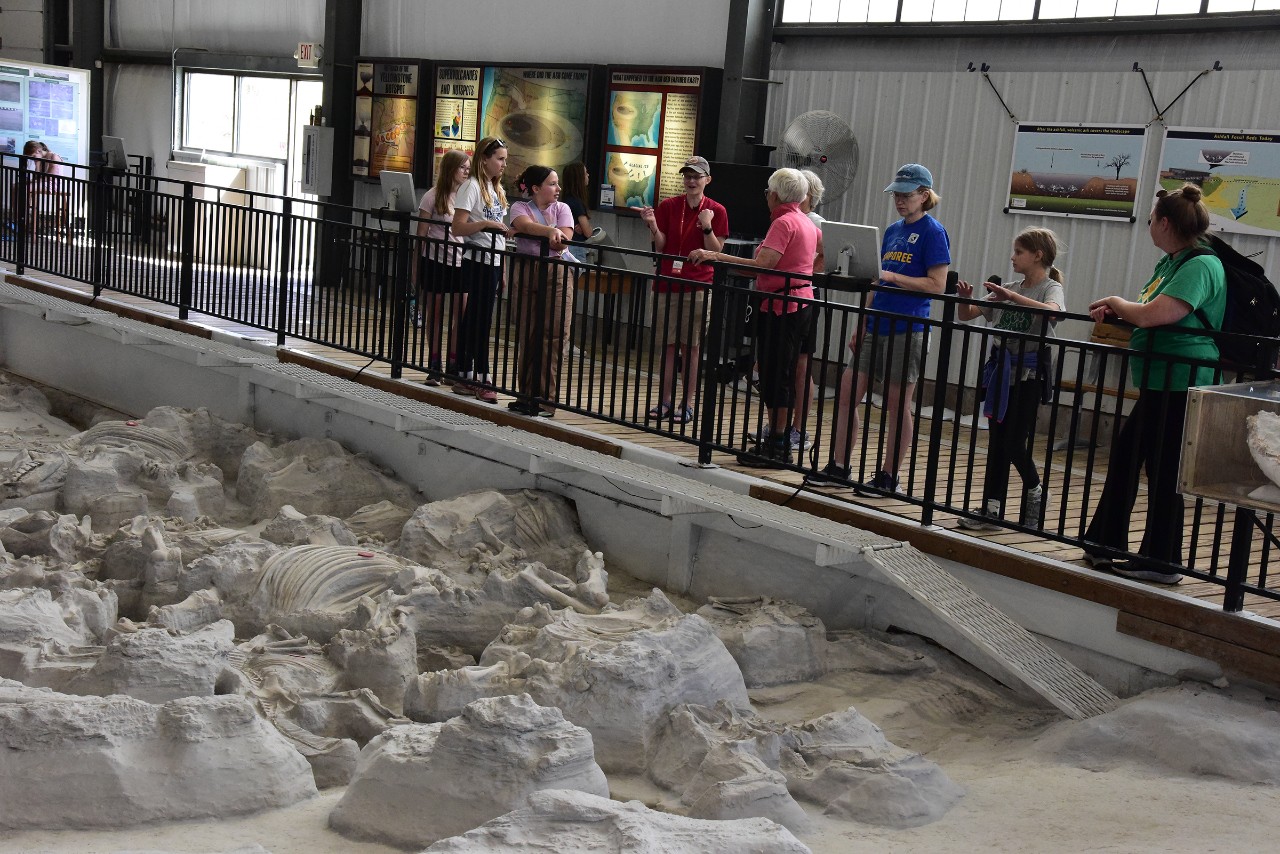
Volcanic ash buried huge herd of Nebraskan rhinos
UC researchers discover prehistoric rhinos lived in super-herds
Discover magazine highlighted research by the University of Cincinnati that found prehistoric rhinos lived in super-herds 12 million years ago.
Researchers studied the isotopes of rhino teeth found in what is now northeast Nebraska. Here, more than 100 rhinos at a single water hole died and were entombed in ash from an eruption of the Yellowstone supervolcano.
Since the discovery of rhinos at Nebraska’s Ashfall Fossil Beds State Historical Park in 1971, researchers have wondered what drew so many animals together in the same place. Did they converge from far away, perhaps to seek shelter from the unfolding natural disaster of the volcanic eruption with its choking ash?
“We found they didn’t move very much,” lead author and UC graduate Clark Ward said. “We didn’t find evidence for seasonal migration or any evidence of a response to the disaster.”
Read the Discover magazine story.
Featured image at top: Visitors listen to a docent at Nebraska's Ashfall Fossil Beds State Historical Park. Photo/John Haxby/The University of Nebraska State Museum
More UC Geosciences in the news

Ashfall Fossil Beds State Historical Park features more than 100 specimens of prehistoric rhino. Photo/John Haxby/The University of Nebraska State Museum
- BBC Wildlife Magazine: In the 1970s, over 100 ancient rhinos were found entombed in Yellowstone ash — we finally know what happened
- Billings Gazette: Prehistoric rhinos lived in super-herds
- All That's Interesting: Scientists investigate fossils from massive herd of prehistoric rhinos
Related Stories
Children learn about UC science, engineering majors during visit
February 19, 2025
Students from the Clifton Area Neighborhood School visit UC to get an introduction to subjects such as science, Classics and engineering.
Local 12: UC investigates potential PFAS contamination in groundwater
May 9, 2024
Local news media highlight UC project to study contamination in groundwater in southwest Ohio.
UC launches new Ohio water study
May 28, 2024
Spectrum News highlights a new UC study of contaminants in groundwater along the Great Miami River.
